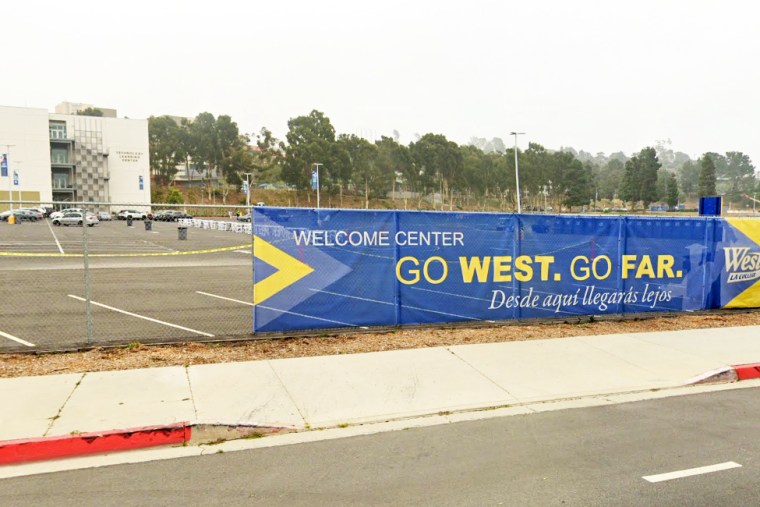Community college bachelor’s programs may play a major role in closing the higher education gap for Latino students, according to a report UCLA published Tuesday.
Since 2014, only a handful of California’s community colleges have been approved to offer two-year bachelor’s degree programs. For Latinos who were able to complete the program, the degree can be life-changing in terms of educational attainment and financial stability, according to the new UCLA Latino Policy & Politics Institute study.
The UCLA institute examined data from students enrolled in the first five cohorts, or groups, of California’s inaugural community college baccalaureate, or CCB, programs and surveyed graduates to study certain postgraduate outcomes.

About 64% of all Latino students who enrolled in CCB programs graduated within two years of enrollment — similar to the 68% of non-Latino students who graduated. The report also found fewer Latino CCB graduates had to take out student loans to fund their educations, 35%, compared to 46% of all California college graduates.
The community college bachelor’s degrees also led to higher financial outcomes. Latino CCB graduates reported earning over $22,600 more per year on average than they did before the program. They also boasted higher rates of employment compared to non-Latino CCB graduates.
In California, 22% of Hispanic adults (25 and older) had earned associate degrees or higher, compared to 56% of white non-Hispanic adults, according to Excelencia in Education, an organization that analyzes strategies to boost Latino college completion.
The CCB programs also address industry and labor needs: Some are in the fields of dental hygiene, respiratory care, automotive technology and biomanufacturing.
‘Life-changing’
The report’s first author, Cecilia Rios-Aguilar, a faculty member at the UCLA School of Education & Information Studies, said in an interview that CCB programs are particularly helpful because of their accessibility in terms of location, cost and connections to certain fields and industries.
“You don’t have to relocate, you don’t have to give up your current work, and you don’t have to give up who you are,” Rios-Aguilar said. “Your lived experiences will remain, and you can still achieve a bachelor’s degree under those conditions.”
Rios-Aguilar added that community college bachelor’s programs make returning to school easier for students from nontraditional educational backgrounds.
“It’s opening the doors very concretely to Latino communities and Latino students in different parts of California to access to persist and to finish these degrees and get a job,” Rios-Aguilar said. “We’ve noticed that the CCBs are serving more nontraditional students, again, because of the value proposition.”
Susan Mendoza, 37, is a licensed dental hygienist who graduated from a two-year bachelor’s degree program at West Los Angeles College — a community college in Culver City.
Mendoza grew up with a single mother who held down two jobs and with two grandparents. She said that when she accompanied her grandparents to their dental visits, she saw that there was a large disconnect in dentistry when it came to Latinos.
“It was hard to communicate their needs, insurance benefits,” Mendoza said, as well as the necessity of what the dental staff was recommending.
Seeing that, she said, motivated her to become a dental hygienist.
Mendoza took prerequisite courses at a night school while she worked a day job at a dental office and earned admission into the two-year bachelor’s program. She said the program’s location and its affordability were the primary reasons she could access the degree program, which was necessary for her educational and career goals.
The program at WLAC provided a unique opportunity to help Latino community members get access to dental services, Mendoza said. She described a class trip on which she and other Latino dental hygiene students went to provide care at dental clinics in Montebello and Simi Valley, where the patients spoke only Spanish.
Mendoza described her experience with WLAC’s bachelor’s program as nothing less than “life-changing,” and after she graduated in December with her degree, she is focusing on treating patients in underserved areas.
The ability to earn a bachelor’s degree in two years is especially significant considering the number of Latinos attending community college: In California, about 640,000 Latino students were enrolled in community colleges in fall 2022 — more than twice the number who were enrolled in the California State University and the University of California systems combined (about 285,000 students), according to the report.
Promising — but still too inaccessible
The wrinkle is that despite the immense boost they can provide to Latino and other students, CCBs are still largely inaccessible. California, with 31 approved CCB programs, is one of only 23 states that have authorized at least one community college to offer bachelor’s degree programs.
The data also found there are still gaps in Latino enrollment in those two-year bachelor’s programs: Of the 1,486 students enrolled in the first five groups that were studied, about 30% were Latino, though the overall Latino student share at those 15 community colleges was 46% at that time.
“We need a new marketing campaign and awareness campaign to reach out to those Latino communities and to the public in general,” Rios-Aguilar said. “What we’re really wanting to work in is making our research actionable and translatable.”
For more from NBC Latino, sign up for our weekly newsletter.
